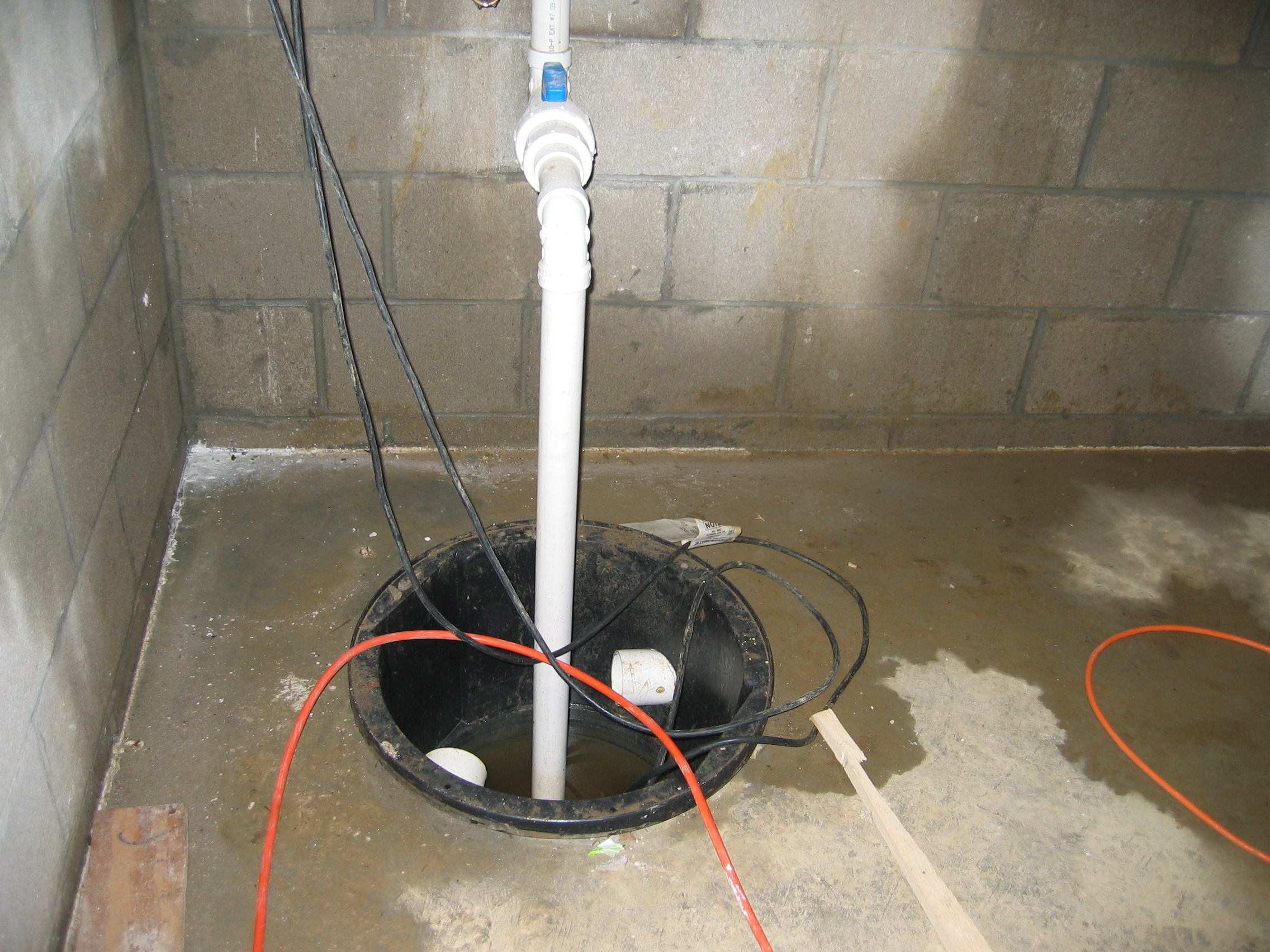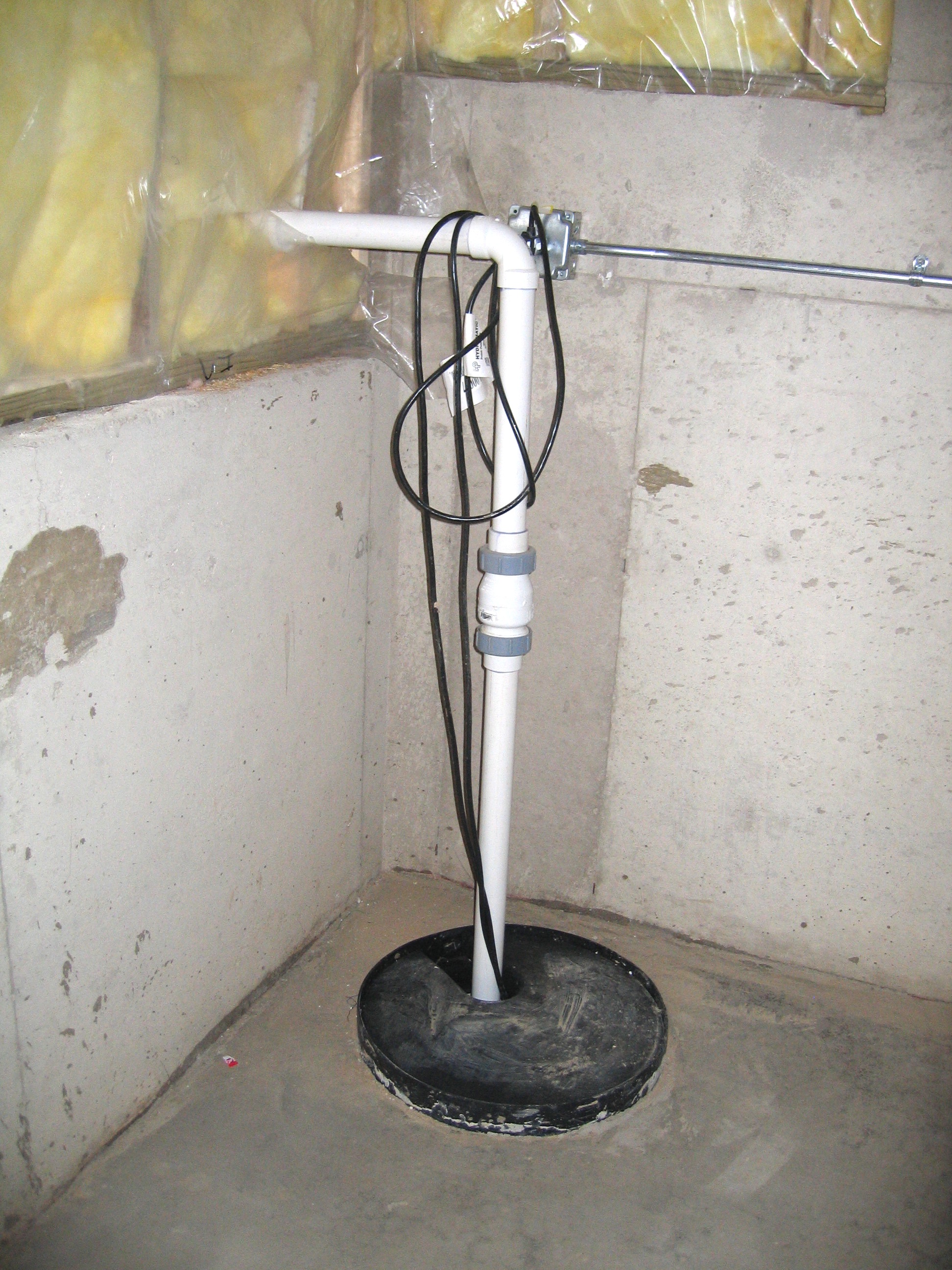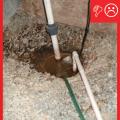Scope
Select and install sump pumps that have tight-fitting lids with gaskets and mechanical fasteners.
See the Compliance Tab for links to related codes and standards and voluntary federal energy-efficiency program requirements.
Description
Water management strategies that help remove excess water from the foundation often include the installation of a reservoir called a sump in the basement or crawlspace of the home. For more information about drains and sumps see the guide Drain or Sump Pump Installed in Basements or Crawlspaces. The sump is generally a small pit (also called a crock or vault) that extends through the slab into the ground below and provides a drainage place for excess water.
When building a home, the best way to protect the foundation from moisture issues is with proper site grading, installation of gutters and downspouts, and installation of exterior footing drain pipe that drains to daylight, a drywell, or a storm sewer. When renovating a house that has evidence of water issues, if it is not feasible to construct an exterior drainage system, drain pipe can be installed along the interior footing that drains to a sump pump, which collects the water and sends it to the storm water, sewer, drywell, or other approved location. Even if there is no sign of water intrusion in retrofit or new construction, a sump pit is sometimes installed in the basement floor slab as a precaution; then, if there are future changes in ground water levels, a pump can be installed in the sump pit (Ueno and Lstiburek 2010).
The sump pit should be covered with a gas-tight lid. While sump pumps are very effective in removing water, if they are not covered and installed properly, they can create additional water management issues, as well as indoor air quality concerns for the house. Sumps usually have standing water. If the sump pit is open or has a loose-fitting lid, this water can evaporate into the air, raising the relative humidity inside the home, basement, and crawlspace. This can encourage the growth of mold, which is a health concern, and can increase the moisture level of wood framing, inviting fungal decay and wood-eating pests.
Uncovered or improperly sealed sump pumps can also allow radon and other soil gases to enter the basements and crawlspaces and then mix with air inside the home (EPA 2012). Radon is a naturally occurring radioactive, carcinogenic gas found in varying levels in the soil and air. In high-radon areas, if soil gases are allowed to enter the home, radon can accumulate inside the home in potentially toxic levels (EPA 2001). See Approved radon-resistant features installed in Radon Zone 1 homes for more information on radon and ways to reduce radon accumulation in homes.
The 2009, 2012, and 2015 IRC require that any sumps pumps that are installed have a gas-tight, removable cover. ENERGY STAR Single-Family New Homes Version 3.0, Revision 11, requires the sump lid to be mechanically attached and that the sump be fitted with a full gasket seal.

How to install a sump pump cover
- Install the electric sump pump to manufacturer's specifications, making sure the float is unobstructed. Installation of the pump should happen after the home's electric meter has been set. This will allow you to test the pump and ensure it is operating properly and discharging water as intended.
- Select a sump pump model with a cover that is tight fitting and that seals the entire surface of the crock or vault. Sump covers should be made of durable plastic or other rigid material and designed for air-tight sealing with a built-in gasket. Select a sump pump with a lid that has built-in air-sealing grommets around all penetrations for electrical wiring, water ejection pipes, or radon vent pipes.
- Mechanically fasten the cover in place with screws or other means that will maintain tight contact between the lid, the gasket, and the rim of the crock. Sump covers that permit observation of conditions in the sump pit are recommended. If the sump is installed in a concrete slab, caulk around the outside edge of the vault where the vault meets the concrete (EPA 1994). If the sump is installed in a crawlspace with a dirt floor covered by a polyethylene vapor barrier, ensure that polyethylene covers the ground around the sump pump and is taped to the rim of the vault.


Success
In areas where radon is a known specific threat to air quality (i.e., EPA Radon Zone 1 areas), an important part of the radon mitigation strategy is a sump pump cover that is mechanically attached with a full gasket seal. After the sump pump has been installed, complete radon testing to ensure that the cover is sealed and not allowing any radon into the living space.
Climate
No climate specific information applies.
Training
Compliance
Retrofit
If the home has a sump pump, it should be equipped with a gasketed, tight-fitting lid to keep radon, other soil gases, and water vapor from entering the basement or crawl space, as described in the Description tab. If the lid is missing, one can be purchased from the sump pump manufacturer, from most hardware stores, or from plumbing supply stores. The sump may be used to collect water flowing across the crawlspace or basement floor in case of intermittent flooding events. The preferred method is to use a low-point drain rather than an open sump pit to collect surface water. The water is then piped underground from the drain to the sump pit and enters the pit from the side, below ground, so that the top of the pit can be continually covered by an air-tight solid cover.
See the Description tab and these Building America Solution Center guides for additional guidance on sump pumps.
If any standing water, mold, rotten wood, or hazardous materials are present in the crawlspace, consider addressing these conditions when addressing the sump pump. See the following Building America Solution Center guides for more information:
The U.S. Department of Energy’s Standard Work Specifications has additional information on sump pumps and worker safety in crawl spaces.
See Compliance tab.
More
More Info.
Access to some references may require purchase from the publisher. While we continually update our database, links may have changed since posting. Please contact our webmaster if you find broken links.
The following authors and organizations contributed to the content in this Guide.
Building Media, Inc., lead for the Building America Retrofit Alliance (BARA), a DOE Building America Research Team
Pacific Northwest National Laboratory




